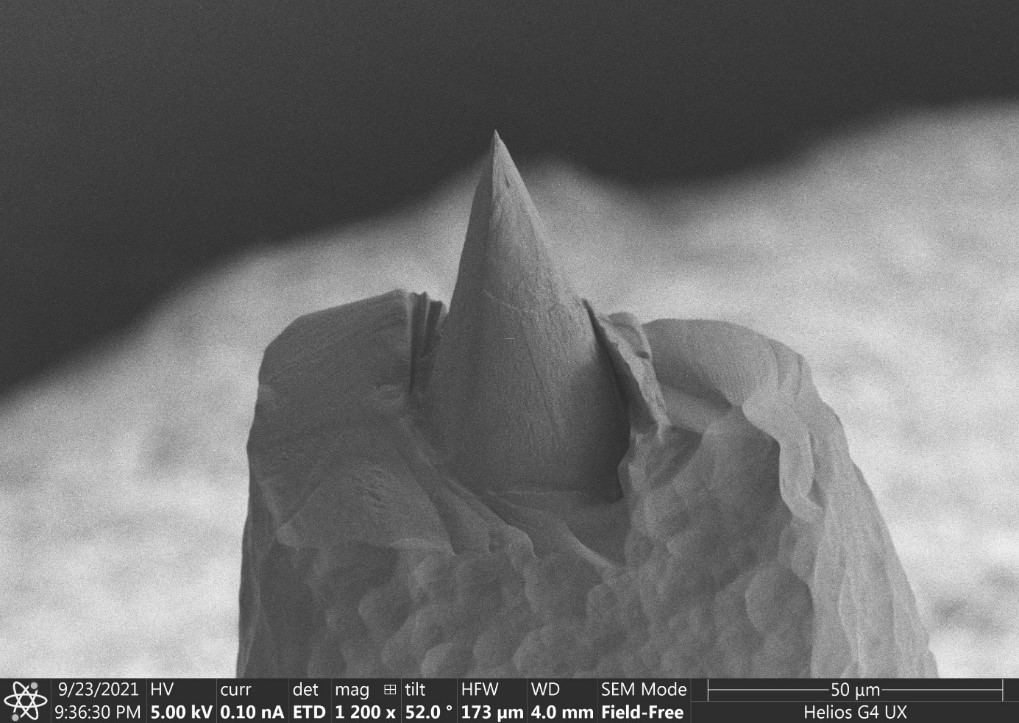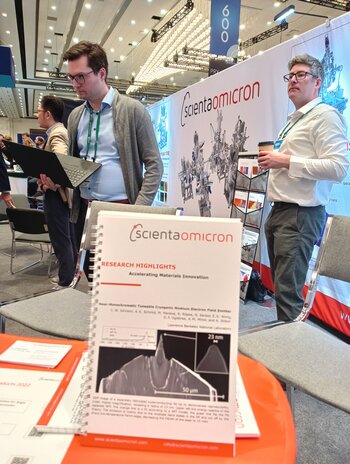Winner of Notebook-competition
Title of paper:
Near-Monochromatic Tuneable Cryogenic Niobium Electron Field Emitter
Tells us how Scienta Omicron has helped you achieve your research goal:
We measured the field emitted electron beam energy distribution with the ScientaOmicron DA20 R analyzer
Briefly describe why the result is important and of general interest to the scientific community:
Electron microscopy and spectroscopy are currently restricted by beam sources with relatively large energy spread (200-1000 meV). We have realized a superconducting monocrystalline niobium nanotip electron field emitter with an unprecedented ultra-narrow tuneable energy distribution down to only 16 meV (measured with the ScientaOmicron DA20 R analyzer) and with high brightness and coherence. The emission process uses resonant quantum surface states from a nano-protrusion that can be energetically shifted by the applied voltage and cut off by the sharp low-temperature Fermi edge. The outstanding performance leap opens up new fields in aberration-corrected microscopy, high-resolution vibrational spectroscopy, electron energy loss spectroscopy, multipass-transmission electron microscopy, and metrology with electron matter-waves. We published the data in Phys. Rev. Lett. 129, 244802 (2022).

Figure caption:
Electron microscope image of our superconducting, monocrystalline niobium electron field emitter. This novel beam source for microscopy, spectroscopy, and quantum information science emits electrons with ultranarrow energy distribution.
List of authors:
C. W. Johnson, A. K. Schmid, M. Mankos, R. Röpke, N. Kerker, E. K. Wong, D. F. Ogletree, A. M. Minor, and A. Stibor
Research institute:
Lawrence Berkeley National Lab

